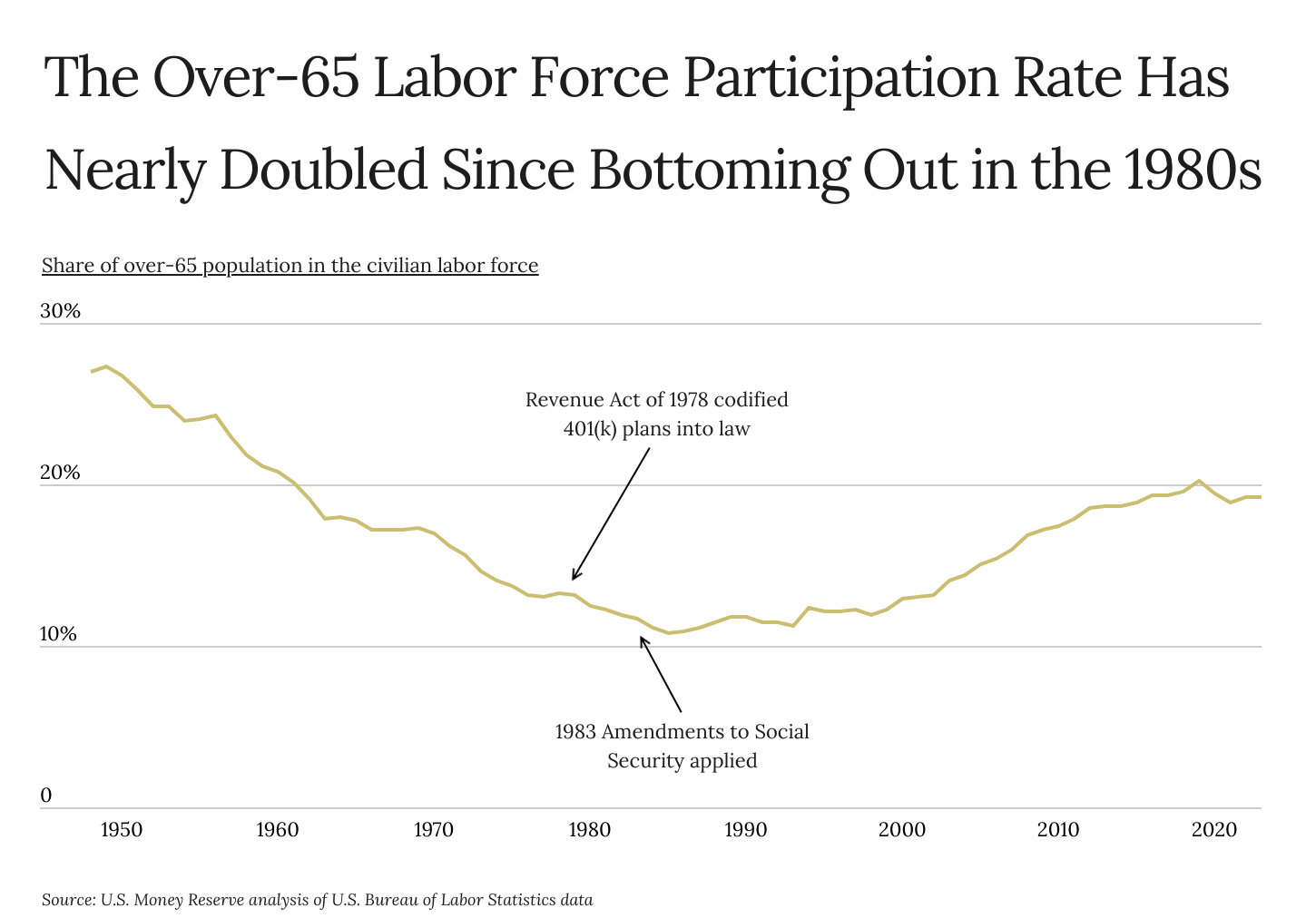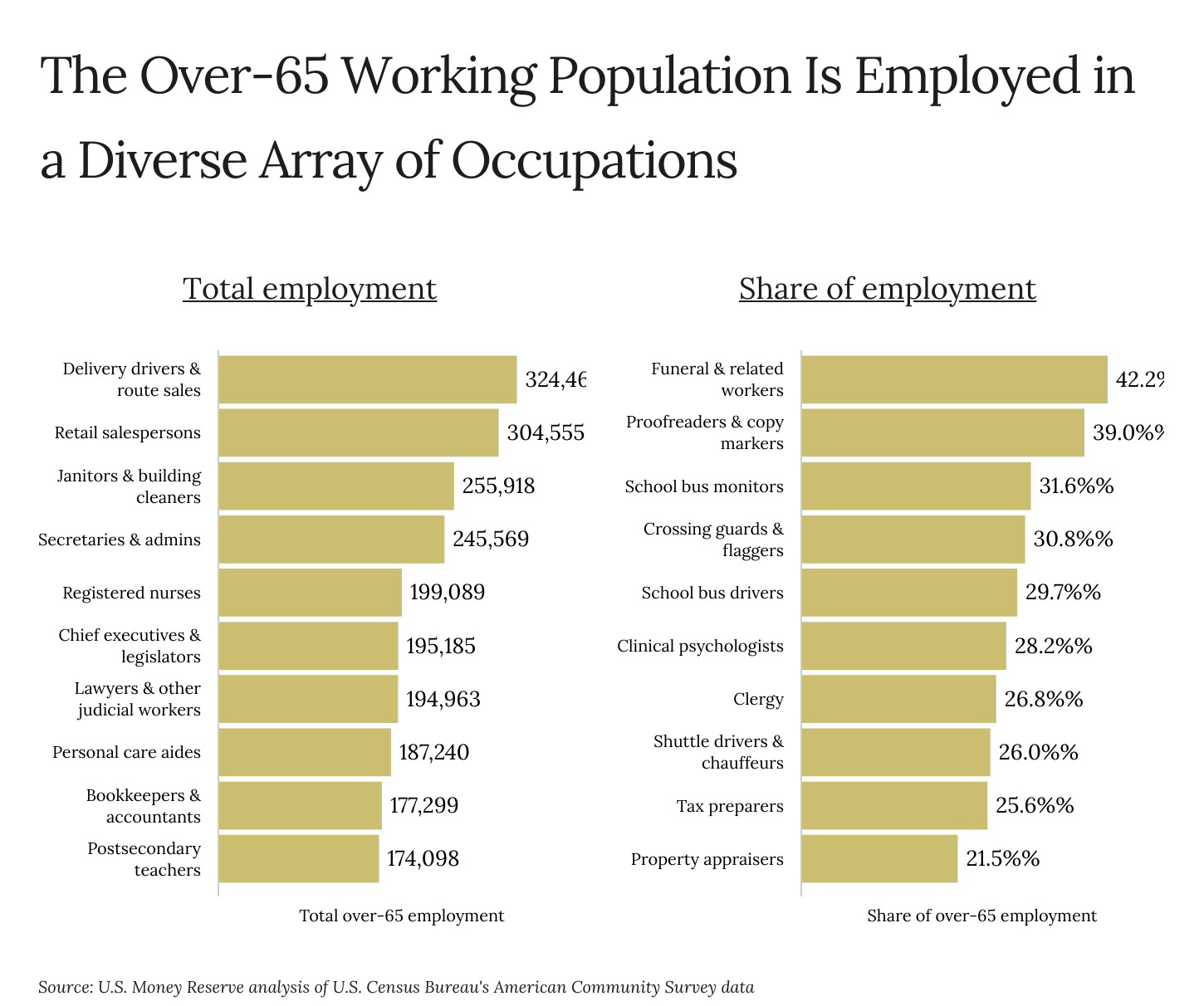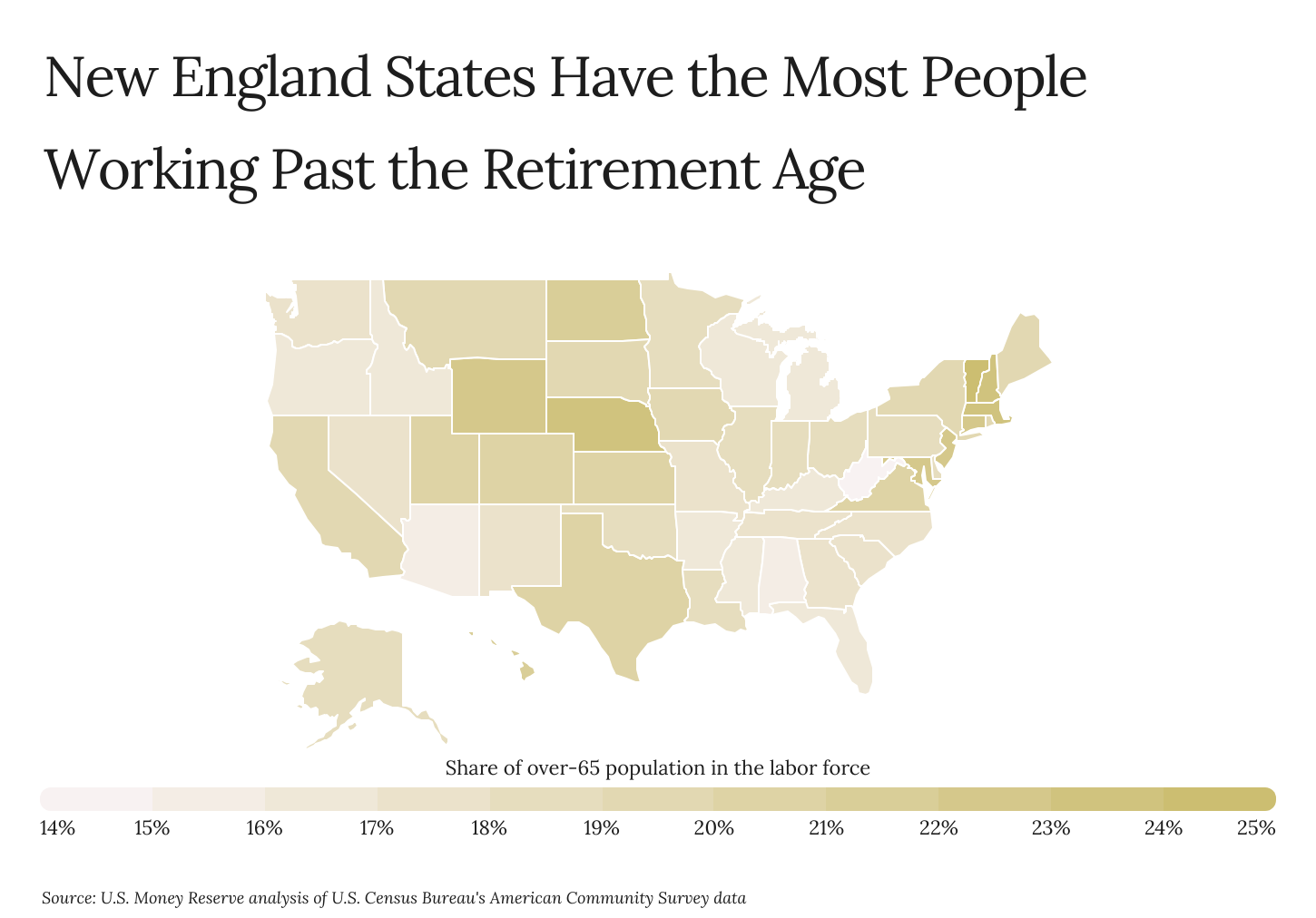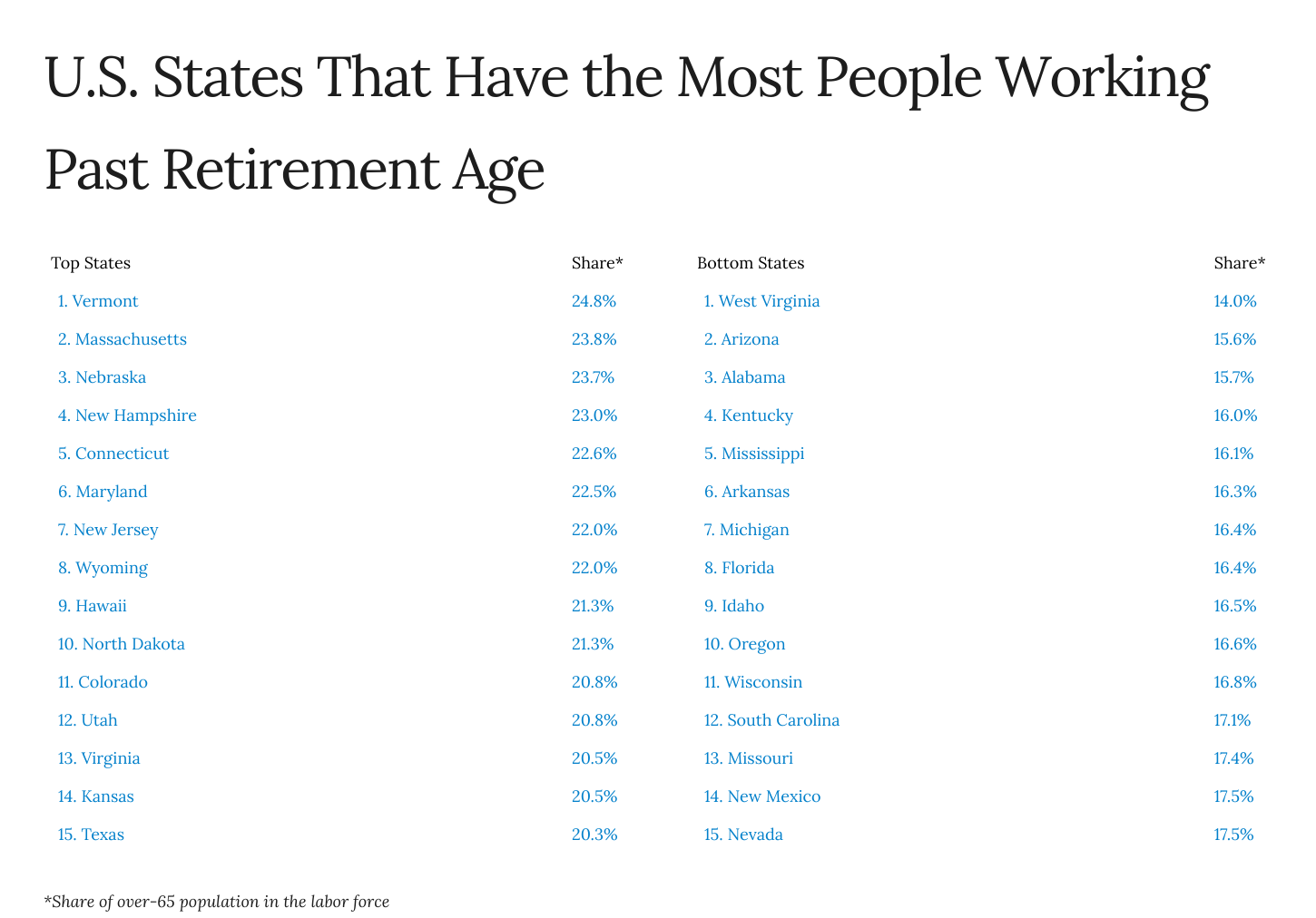As the population continues to age, a growing number of individuals are extending their careers well beyond the traditional retirement age. This trend is influenced by several factors, including economic necessity, personal fulfillment, and governmental policies that encourage extended participation in the workforce.
Another key driver behind this shift is increasing life expectancy and the subsequent need for sustained financial security, particularly in an era where pensions and retirement benefits may be insufficient to cover expenses in longer post-retirement years. Additionally, higher educational attainment has led to more occupational opportunities in fields that are less physically demanding, enabling older workers to remain active in their careers.
Over-65 Labor Force Participation Doubles

After declining for several decades, the labor force participation rate among individuals age 65 and older has experienced a notable increase since the 1980s. After reaching a low of 10.8% in 1985, the participation rate has steadily climbed, reaching 19.2% in 2023. This near-doubling of labor force participation aligns closely with significant changes in government policy.
One key change was the shift from traditional pension plans—defined benefit plans that guarantee a fixed income in retirement—to tax-advantaged 401(k)s and other defined contribution plans that place more responsibility for retirement savings on the individual employee. As a result, many older workers continue to work beyond retirement age to ensure they have adequate savings. Additionally, amendments to Social Security made in 1983, particularly the gradual increase in the full retirement age, have further encouraged older Americans to delay retirement to maximize their benefits.
Diverse Occupations for Over-65 Workers

The over-65 working population is employed across a wide spectrum of occupations, reflecting the diversity of opportunities for older Americans and the variety of reasons individuals continue to work past the traditional retirement age. Certain roles, however, are more commonly filled by older workers, both in terms of total employment numbers and share of the occupation’s workforce composed of individuals age 65 and older.
Among the occupations with the highest overall numbers of over-65 workers, delivery drivers and route salespersons (324,000 workers), retail salespersons (304,000), and janitors and building cleaners (256,000) are prominent. These positions often have lower educational requirements but can include varying physical demands, showing that many older workers are still engaged in physically active roles.
In terms of the highest share of workers age 65 and older, certain occupations stand out for their significant reliance on older employees. For instance, funeral and related workers have the highest share of over-65 workers at 42.2%. Similarly, school bus monitors (31.6%), crossing guards and flaggers (30.8%), and school bus drivers (29.7%) also have a high concentration of older workers. Many of these positions require minimal specialized training or previous work experience, yet they provide fulfillment through social connection and community involvement.
New England States Lead in Retirement-Age Workers

The labor force participation rate of individuals age 65 and older varies significantly across the United States, with unique economic and cultural factors contributing to where more older adults continue to work past the traditional retirement age.
Among states, Vermont has the highest share of its over-65 population in the labor force, with 24.8% of the retirement-age population still working. Close behind are other New England states such as Massachusetts (23.8%) and New Hampshire (23.0%), along with Connecticut (22.6%). These areas tend to have both high educational attainment and high living costs. Higher educational attainment means that individuals are more likely to work in occupations that allow for continued employment even as their physical abilities decline. At the same time, higher living costs likely incentivize older individuals to remain in the workforce longer to save more for retirement.
At the opposite end of the spectrum, Southern states with less expensive living costs and lower levels of educational attainment tend to have the lowest rates of senior labor force participation. Examples include West Virginia (14.0%), Alabama (15.7%), Kentucky (16.0%), and Mississippi (16.1%). Arizona also stands out with low levels of retirement-age workers, likely because many individuals relocate to the state specifically to enjoy retirement after exiting the workforce.
Similar trends hold at the local level where Washington D.C. ranks highest among the nation’s largest metros, with 25.5% of its over-65 population still employed. Other notable large metros include Boston, Massachusetts (24.6%) and Salt Lake City, Utah (24.4%), which also demonstrate strong labor force participation among the retirement-age population. These metro areas, often hubs of economic activity with diverse employment opportunities and high educational attainment, provide environments where older workers can maintain jobs that suit their experience and physical capabilities.
Below is a breakdown of where people are working past the retirement age for the top and bottom metros and states. The data is from the U.S. Census Bureau and the analysis was conducted by U.S. Money Reserve, a leading distributor of government-issued gold, silver, platinum, and palladium. For the complete set of results, see Cities With the Most People Working Past the Retirement Age on U.S. Money Reserve.
Large Metros That Have the Most People Working Past Retirement Age

U.S. States That Have the Most People Working Past Retirement Age

Methodology

Photo Credit: AYO Production / Shutterstock
The data used in this analysis is from the U.S. Census Bureau’s 2022 American Community Survey released in 2023. Researchers at U.S. Money Reserve ranked locations by the share of the 65-and-older population in the labor force. People were considered to be in the labor force if they were employed or unemployed but actively looking for work. The researchers also calculated the total over-65 population in the labor force, share of population over 65, share of labor force over 65, median wage and salary income for full-time workers over 65, and median wage and salary income for full-time workers ages 16–64. To improve relevance, metropolitan areas were grouped into cohorts based on population size: small (less than 350,000), midsize (350,000–999,999), and large (1,000,000 or more).
For complete results, see Cities With the Most People Working Past the Retirement Age on US Money Reserve.




